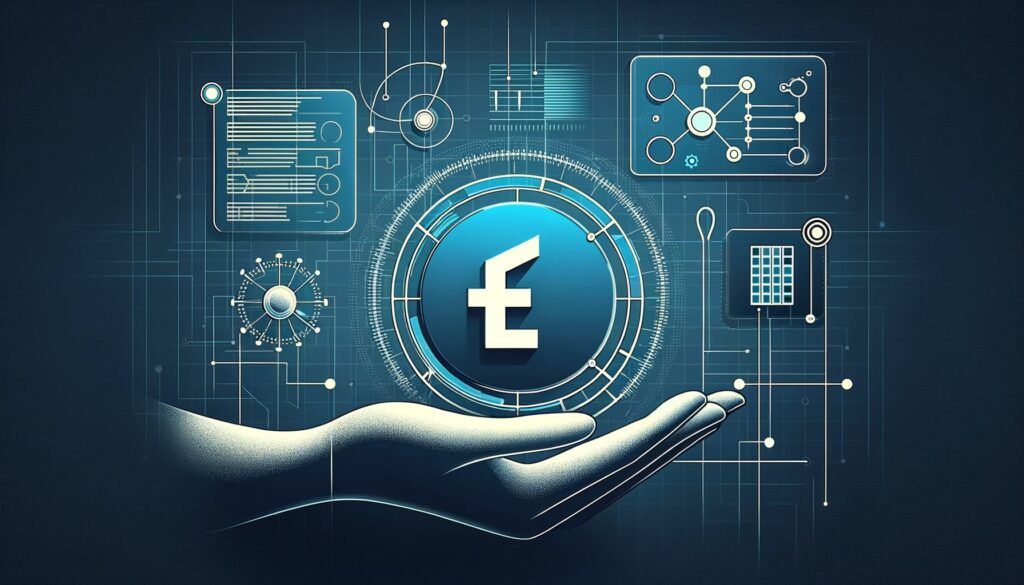In a world grappling with soaring inflation rates, Flatcoin emerges as a beacon of hope. As traditional financial systems show signs of strain, this innovative digital asset class offers a novel approach to safeguarding purchasing power.
Table of Contents
What Are Flatcoins?
Flatcoins represent a revolutionary class of digital assets created as a direct response to global inflationary trends. They are distinct from traditional cryptocurrencies, as their design focuses on stability and maintaining purchasing power. Unlike typical volatile digital currencies, flatcoins utilize algorithmic methods or asset-backed strategies to ensure their value remains consistent relative to inflation, making them a more reliable option for preserving wealth and facilitating everyday transactions in an increasingly digital economy.
The Evolution of Flatcoins

The Birth of a New Digital Asset
The concept of flatcoins arose from the economic turmoil and heightened inflation rates experienced globally, especially in 2023. They were envisioned as a stabilizing force in the volatile world of digital currencies. This idea gained traction as traditional financial models showed increasing signs of strain under inflationary pressure. The development of flatcoins marks a pivotal moment in the history of digital assets, reflecting a shift towards creating a more stable and reliable form of cryptocurrency that aligns closely with everyday financial needs and global economic realities.
Spotlight on Major Flatcoin Projects
Key flatcoin projects like the Frax Price Index (FPI), Nuon, and Spot have played a significant role in shaping the flatcoin landscape. Each project brought a unique approach to stability in the cryptocurrency market. For instance, FPI adjusts its value based on the U.S. Consumer Price Index, ensuring its alignment with real-world inflation figures. Nuon and Spot, similarly, have introduced innovative methods to tether their value to stable economic indicators. These projects exemplify the diverse methodologies being explored within the realm of flatcoins, setting the stage for future developments in this emerging field.
How Flatcoin Crypto Works

Technical Underpinnings of Flatcoins
Flatcoins operate on a sophisticated blend of algorithmic formulas and smart contract technology. These algorithms are designed to adjust the value of the currency in response to real-time inflation data. This dynamic adjustment mechanism is key to maintaining a stable purchasing power for the currency. By employing smart contracts on blockchain platforms, flatcoins ensure transparent, secure, and autonomous operations. This framework allows for a decentralized approach to currency stabilization, contrasting with traditional, centrally-controlled financial systems.
Mechanisms of Stability
The stability of flatcoins is achieved through different models. Some flatcoins are asset-backed, meaning their value is pegged to a basket of assets, commodities, or a mix of various currencies, reflecting real-world value and cost of living. Other flatcoins use an algorithmic approach, where the supply of the currency is automatically adjusted based on certain economic indicators, such as inflation rates. These methods aim to reduce crypto volatility and provide a more predictable and stable digital currency option, making them an attractive alternative for both everyday transactions and as a hedge against inflation.
Challenges and Controversies
Overcoming Implementation Hurdles
Flatcoins, while innovative, face significant challenges in implementation and wider acceptance. The integration of advanced technology such as smart contracts and real-time inflation tracking poses technical challenges, especially in ensuring accuracy and reliability. Regulatory compliance is another major hurdle, as the legal framework for such novel financial instruments is still evolving. Skepticism within the financial sector also poses a challenge, as traditional institutions and investors may be hesitant to embrace a new form of currency that departs from conventional financial models.
Security Concerns
The security of flatcoins is a paramount concern, given their reliance on technology and digital platforms. Vulnerabilities in smart contract code or blockchain infrastructure can pose risks to the stability and integrity of flatcoins. Ensuring robust security measures and protocols is crucial to protect against potential hacking or fraudulent activities. There is also the challenge of ensuring the accuracy and security of the data sources used for inflation tracking, as any manipulation or error in these data feeds could significantly impact the value and trustworthiness of flatcoins. Addressing these security concerns is essential for the long-term viability and acceptance of flatcoins.
Flatcoins and the Future of Finance
Potential Impact on Global Markets
Flatcoins could significantly impact the global financial landscape, offering an alternative to traditional fiat currencies. By providing a stable, inflation-resistant digital currency, flatcoins could facilitate international trade and transactions, reducing the reliance on fluctuating fiat currencies. They could also serve as a safe haven for investors in unstable economies, offering a more predictable store of value. The potential for flatcoins to be integrated into everyday transactions could also lead to a broader acceptance and use of digital currencies in the general economy.
Forward-Looking Perspectives
The future of flatcoins is being shaped by ongoing innovations and research. Financial experts and futurists are exploring the potential evolution of these digital assets, considering their role in an increasingly digital and globalized economy. The development of more advanced and secure blockchain technologies, along with improved regulatory frameworks, could further enhance the adoption and effectiveness of flatcoins. These advancements may pave the way for a new era in finance, where digital currencies play a central role in both personal and institutional finance.
Conclusion
The exploration of flatcoins illuminates their potential as a transformative force in the financial sector. By addressing the volatility typical of cryptocurrencies and aligning with global economic trends, flatcoins offer a promising avenue towards a more stable digital economy. However, challenges in technology, security, and regulatory compliance highlight the need for ongoing innovation and thoughtful integration into existing financial systems. As the world continues to digitize, the role of flatcoins could become increasingly significant, reshaping how we think about money, stability, and value in an ever-evolving digital landscape. Their future, though filled with potential, hinges on the balance between technological advancement and practical implementation.
FAQs
What are flatcoins and how do they differ from regular cryptocurrencies?
Flatcoins are a type of digital currency designed to maintain stable value by adjusting to inflation, differentiating them from traditional cryptocurrencies known for their volatility.
Are flatcoins legitimate?
Yes, flatcoins are legitimate digital assets. They use blockchain technology and smart contracts to maintain stability, addressing concerns typical of standard cryptocurrencies.
How do flatcoins maintain their value?
Flatcoins use algorithms and asset-backed strategies to adjust their supply or value in response to real-time economic data, particularly inflation metrics.
Can flatcoins be used for everyday transactions?
Absolutely. The stability of flatcoins makes them suitable for daily transactions, offering a reliable alternative to traditional volatile cryptocurrencies.
What are the main challenges facing flatcoins?
Key challenges include ensuring technological reliability, addressing security vulnerabilities, and navigating the evolving regulatory landscape.


